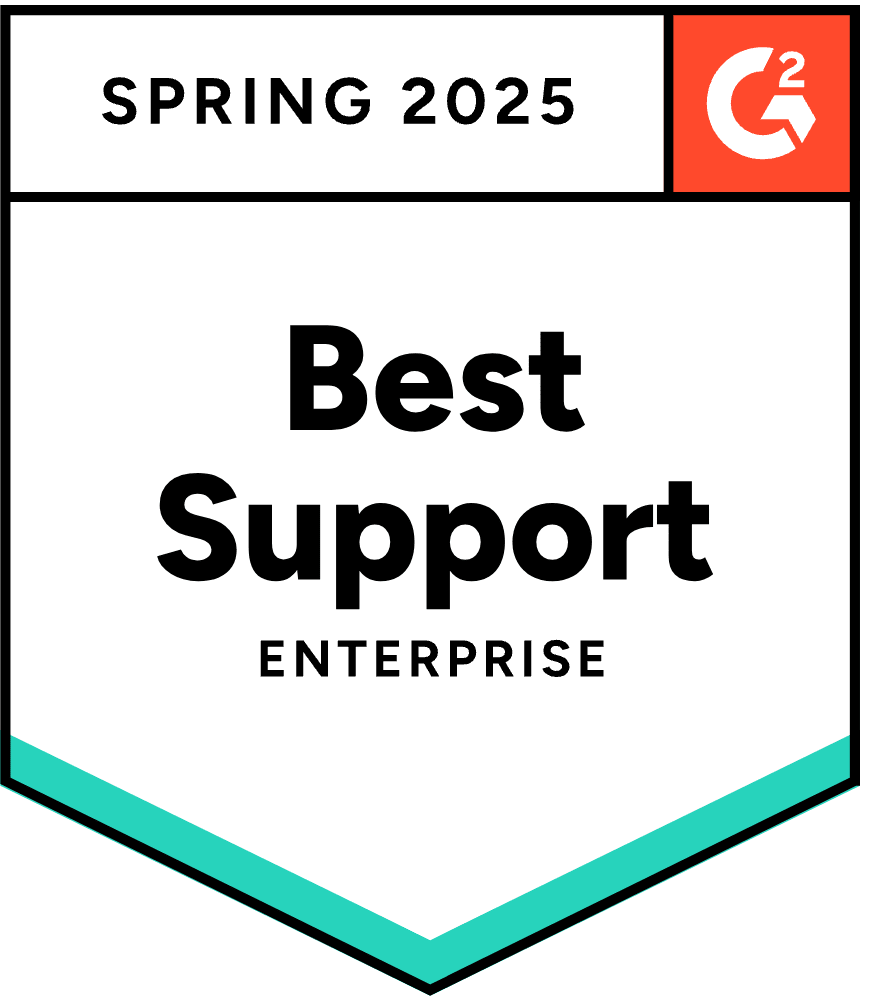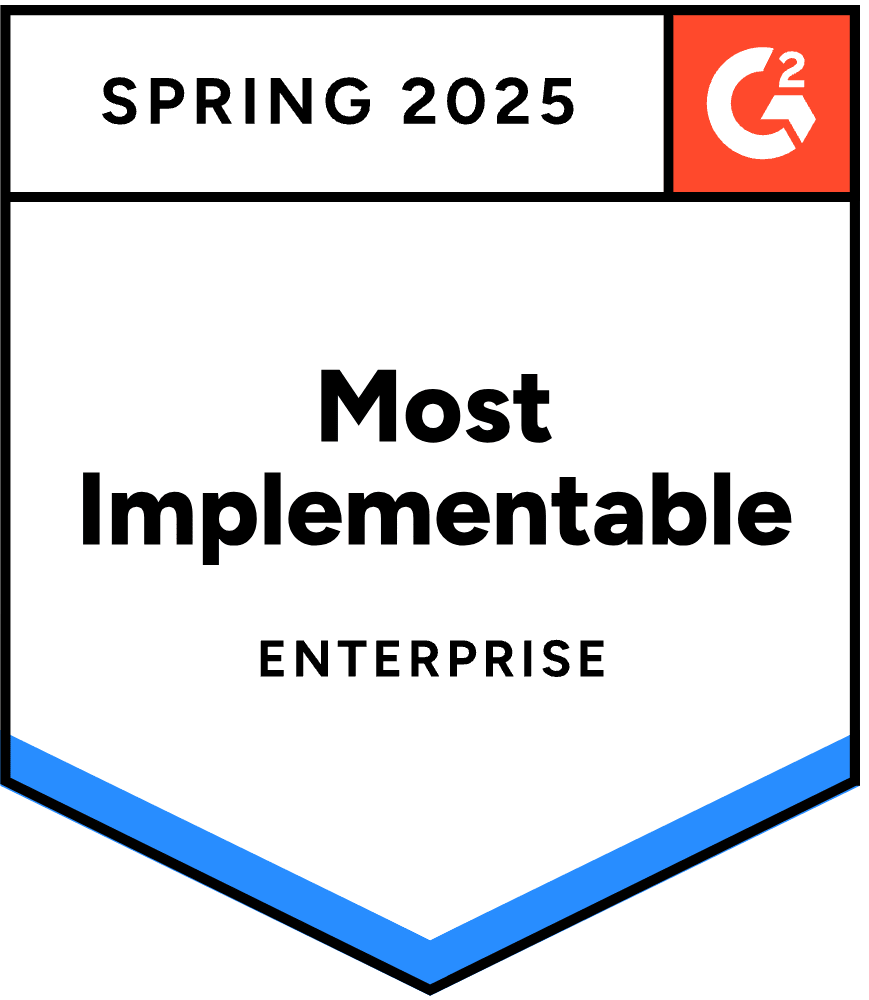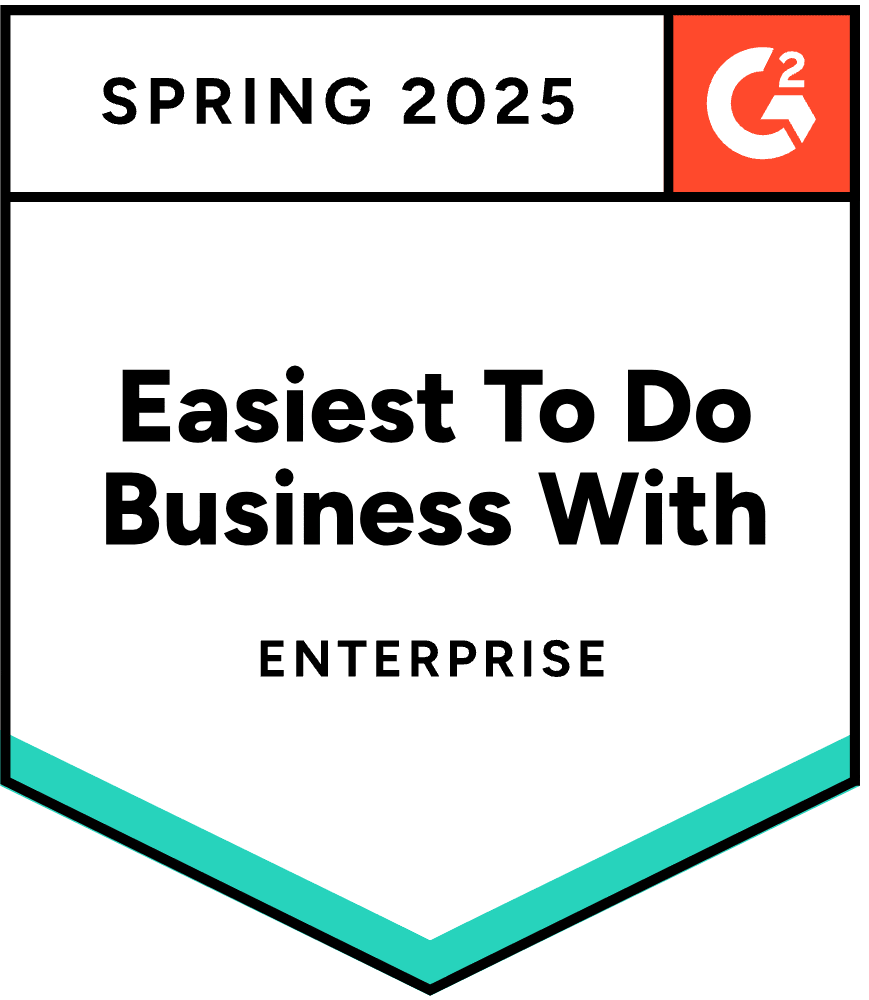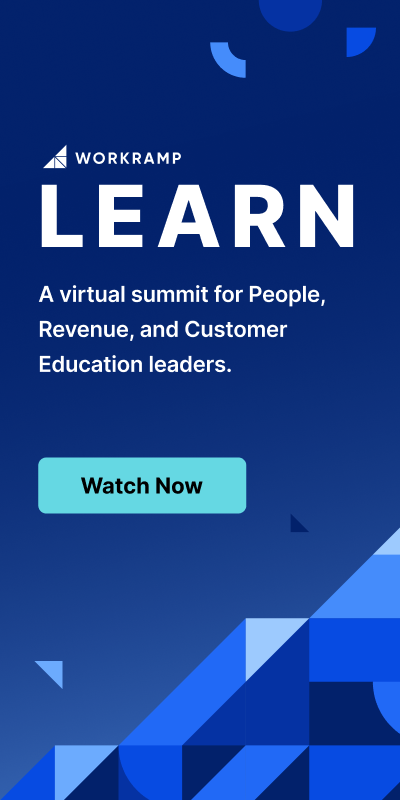Continuous Learning: What It Is & Why It’s Important For Your Business
Maile Timon
View bioLearning Tips Straight to Your Inbox
Learning shouldn’t end at onboarding. In fact, it shouldn’t end. Ever.
Continuous learning is a workplace culture that encourages employees to prioritize ongoing learning and improvement. Continuous learning can happen through various formats, including formal courses, informal learning, shadowing teammates, training programs, one-on-one and group coaching, and casual interactions.
As soon as your employees stop learning, they start looking for their next professional endeavor. In fact, 80 percent of employees rank professional development and training opportunities high on their list of priorities when looking into new jobs. And 94 percent of employees say they would stay longer at a company that invested in their learning and development.
Show your employees you care about their development and career by giving them accessible continuous learning opportunities.
Learn more about the importance of continuous learning and how to leverage a continuous learning platform to unlock your team’s full potential.
In this post:
What is continuous learning?
Continuous learning means that people are learning new skills or gaining knowledge continuously. That doesn’t mean they’re constantly in class—there are many ways to learn, including observing others, listening to podcasts, reading articles, attending conferences, and more.
Importance of continuous learning
Continuous learning is essential in today’s dynamic and rapidly evolving world.
As industries and technologies constantly advance, individuals and teams who commit to ongoing learning gain a competitive edge and adaptability crucial for success.
Embracing a continuous learning mindset fosters personal and professional growth, allowing individuals to acquire new skills, stay relevant in their fields, and enhance their problem-solving abilities.
“Build your village,” says Meredith Fish, PHR, WorkRamp’s VP of People and Culture. You need different people, mentors, coaches, peer advisors, sponsors; they’re all going to play an essential role in identifying skill gaps, helping you know where to go in terms of learning, on-the-job opportunities, and external opportunities.”
Read more: What You’re Missing if You’re Not Building a Culture of Continuous Learning
Continuous learning in organizations
You must promote a learning culture to foster continuous learning in your organization. In this culture, employees are always looking for new information, sharing it with others, gaining new skills, and applying new ideas in their work.
To survive and thrive in today’s era of work, companies need to be innovative and adaptive, which depends on employees’ skills and knowledge. As Lynda Gratton, a professor of management practice at the London Business School, said, “Continuous learning in the workplace must become the new norm if individuals and organizations want to stay ahead.”
The business world changes quickly—if your employees can’t keep up, your organization will fall behind.
Organizations must use different formats and methodologies to promote a continuous learning environment that supports team members with multimodal learning that caters to different learning styles. With many companies moving to remote and hybrid models, learning must also be flexible and on-demand.
Continuous learning in education
Continuous learning isn’t a concept that applies only in business—it’s a vital part of education as well. While many people see education as something that ends when you’re 21 or so and graduate college, it doesn’t have to be that way.
In education and business, you can be open to ongoing learning throughout your career. Even if your formal education ends, there are always opportunities to do research, read journals, and keep up with new developments in your field.
Continuous learning vs. lifelong learning vs. constant learning vs. continual learning
Most people have heard of ongoing learning, but it has many different names. Continuous, constant, and continual are all ways of describing the same thing, but lifelong learning is slightly different.
Lifelong learning is an ongoing process, but there is generally more emphasis on personal development and self-initiated learning vs. skills-based training.
Both continuous and lifelong learning are integral parts of a successful workplace because they promote the idea that learning and improvement is a process, not a destination and that learning should be ongoing regardless of an employee’s level or experience.
Continuous learning examples
Continuous learning can take on many forms, which is advantageous since individuals have different learning styles.
Three of the most common types of continuous learning are formal, social, and self-directed learning.
Formal learning
Formal learning generally occurs at a specific place and time. One example is college, where classes are held at listed times in classrooms. During formal learning, participants gather at the same time rather than taking a class on-demand when it’s convenient.
Formal learning is most commonly associated with schooling but can also include web-based training, workshops, and eLearning.
Social learning
Social learning occurs when you observe others and then mimic their behavior in a similar situation. This can help learners develop specific skills for a particular role or industry.
For example, shadowing is a type of social learning where a learner can observe a more experienced colleague handle day-to-day situations at work. From there, the learner can improve their own problem-solving skills, using the experienced colleague as an example.
Self-directed learning
During self-directed learning, learners complete training courses or read materials at their own pace, either at work or on their own time. For example, on-demand micro-courses not part of a specific training program can be considered self-directed learning. So can reading books relevant to a learner’s industry or role.
Self-directed learning increases learner autonomy, allowing people to learn what they’re most interested in. It is also very convenient for employees and can help improve the adoption of continuous learning in your organization.
Benefits of continuous learning for businesses
The good news is that continuous learning benefits your organization and your employees.
Using online and on-demand methods like asynchronous learning, blended learning, and virtual instructor-led training is a cost-effective way to help employees upskill and reskill. Providing learning opportunities for your team members also helps them feel like valued members of their team because they know you’re invested in their growth and improvement.
In addition, continuous learning offers the following benefits.
Happy and engaged employees
Professional development is a high priority for employees, and it’s crucial to offer continuous opportunities for growth if you want to improve employee engagement and avoid turnover.
Having the right skills for a job helps employees be more capable and self-directed. That helps improve morale, as does the feeling that employees can grow in their careers with your organization.
In a 2022 survey, SHRM found that 76 percent of employees are more likely to stay with an organization that offers continuous training. You can’t afford not to offer these opportunities!
Improved performance
Unsurprisingly, engaged employees do better work, but continuous learning also helps improve performance by filling skill gaps for individuals and within the organization.
A person who is missing key skills—like a supervisor who struggles with coaching—can hurt their team. Offering the opportunity to learn and practice these skills improves that supervisor’s performance and up-levels the entire team.
An incredible 87 percent of companies either have skill gaps now or expect to in the near future. A company culture that encourages continuous learning can train people to meet those needs, improving the entire organization’s performance. Continuous learning is also a great way to meet succession needs and plan for the company’s future.
Read more: 33 Examples of Employee Strengths & Weaknesses + How to Improve Them
Faster growth
Companies that don’t focus on continuous learning often struggle to grow. People get stuck in “the way we’ve always done it” and fail to experiment, adapt, and try new approaches. As a result, the organization as a whole gets stuck.
On the other hand, a culture of continuous learning encourages experimentation and learning from mistakes, which helps a company grow much more quickly. When people are encouraged to think outside the box, it can be easier to innovate, adapt, and improve the organization’s standing in the marketplace.
Read more: How to Empower L&D Champions
Cost-effectiveness
One of the big benefits of ongoing learning is that the investment in learning and development is consistent over time. You don’t have to start from zero and pump a ton of money into training everyone in your organization. Instead, you can create training courses regularly over time and keep everyone growing at a consistent pace.
This makes learning and development cost-effective. You can plan your investments, talk about what types of training make the most sense, and develop them accordingly. You avoid the feast-or-famine cycle that takes more time and money overall.
Better customer experiences
Customer experiences improve significantly when your employees are more skilled and innovative. Customers will get their questions answered more effectively, products and services will meet customer needs more precisely, and employees will be more engaged and motivated as they interact with customers.
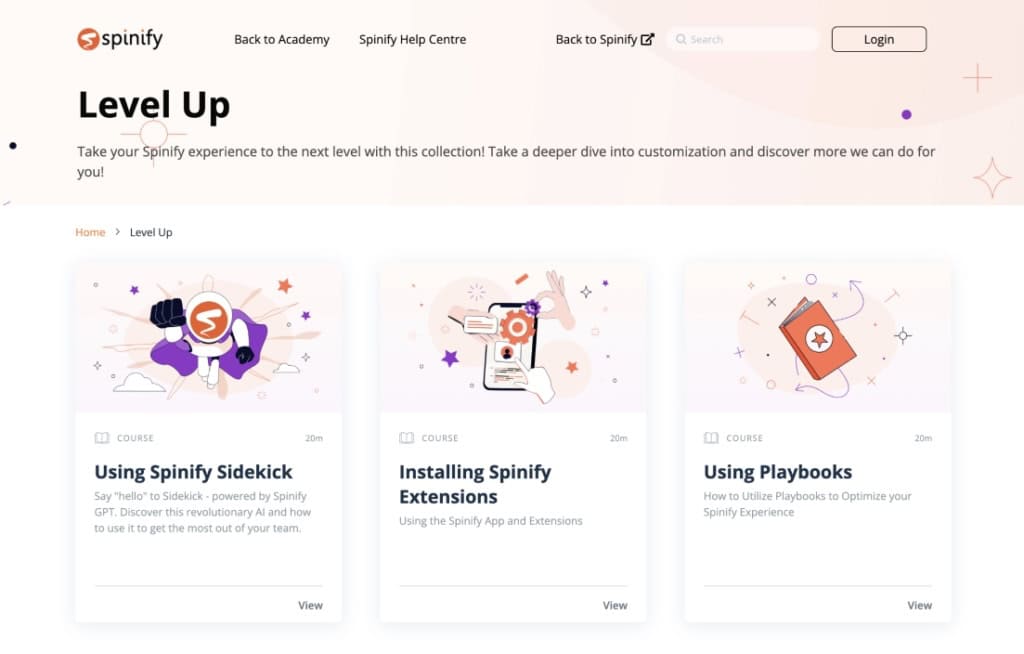
You can also improve customer experience by educating customers on better using your products and services. With the Customer Learning Cloud from WorkRamp, you can develop customer education on the same platform that serves the rest of your training needs.
Customer education helps buyers use products and services more effectively and independently while increasing customer satisfaction and reducing churn. It’s a significant win for your organization.
Benefits of continuous learning for employees
Employees love continuous learning because people love to grow and improve. The better someone is at their job, the happier and less stressed they will be doing it.
The key is ensuring continuous learning fits into an employee’s schedule.
Career progression opportunities
The more skills an employee has, the more qualified they are for new opportunities and roles in the organization.
In 2020, Gartner found that 45 percent of HR leaders reported struggling to develop effective mid-level leaders, and over a third struggled to develop senior leadership. Continuous learning can develop the skills necessary for employees to move into these leadership roles and excel.
Career progression doesn’t just have to be into management, either. Ongoing training can help employees learn the skills to transfer to a new department, start a career in a new field, and more.
Professional confidence
Learning is a path to happiness and self-confidence, empowering learners with a broader perspective and the skills they need to fill in gaps in their abilities.
As their abilities improve, employees will be more confident in trying new approaches in their work, sharing new ideas, and thinking from a different point of view. All of these abilities increase professional confidence, improve work satisfaction, and boost engagement.
Leaders love team members who come up with a solution, not just a problem; continuous learning can help that happen.
Skill sharing with colleagues
When one person on a team learns a new skill, there’s an opportunity for others on the team to learn by observation or asking questions. Skill sharing among colleagues can be one of the most effective learning tools because employees can see the benefit of the skill demonstrated in their daily work.
Job shadowing and mentoring are two examples of skill-sharing with colleagues that can make a big difference in employee growth in their career.
Certification and licensing
Continuous learning can help employees who want to grow in their careers with certifications and new licenses as well. Because these training programs are longer, a culture of ongoing learning can help team members stay consistent and find time to complete the required training.
Having certified and licensed employees brings helpful expertise to the organization and gives employees confidence in their knowledge and the ability to qualify for new roles as their career progresses.
Overall enrichment
Continuous learning often focuses on professional development and skills, but that’s not the only valuable learning. An employee who embraces ongoing learning can also apply that to personal improvement, learning about goal setting, mindset, and more.
These ideas often cross over into the workplace, helping employees be more engaged, resilient to stress, and creative on the job. There’s room for personal development in continuous learning.
Implementing continuous learning: actionable strategies
A workplace culture that values continuous learning sees feedback and coaching as growth opportunities. Promoting continuous learning in the workplace starts with emphasizing the value of giving and receiving feedback and encouragement.
This helps your employees adopt a learner mindset and become proactive about gathering insights from colleagues.
Use these strategies to promote continuous learning in your organization.
Assess learning gaps
The first step is to know where your teams have gaps in skills and development. There are a lot of ways to gather the information.
You might consider:
- Looking at performance reviews
- Surveying employees
- Talking to HR and managers about skill gaps
- Using assessments to test employees for skills essential to their roles
Once you know where the gaps are, L&D can develop a continuous learning plan that addresses those needs.
Get your team on board
Your team needs to believe in the value of learning if you want them to invest time into continuous learning. Learning has to have value in an already busy workday, or your team will check out.
Part of prioritizing continuous learning in the workplace is creating an environment where learning is encouraged and expected. Talk to your team and explain the benefits of continuous or constant learning on a team and individual level.
Explain that continuous learning:
- Keeps their skills and knowledge updated
- Helps them think more creatively
- Prepares them for unexpected situations and problem-solving
- Improves collaboration by making sure everyone is aligned
And then explain that a continuous learner with a growth mindset:
- Regularly asks for feedback on internal and external projects from peers and managers
- Sees failures as learning opportunities instead of weaknesses
- Challenges common preconceptions so that they can learn more
- Actively looks for relevant eLearning courses and certificates
- Takes the initiative to increase knowledge
As Albert Einstein said, “Commit yourself to lifelong learning. The most valuable asset you’ll ever have is your mind and what you put into it.” Instill a hunger for knowledge within your team, and your employees will produce better results and grow with your company.
Implement a learning management system
Training initiatives need a solid technology foundation, so a learning management system is essential.
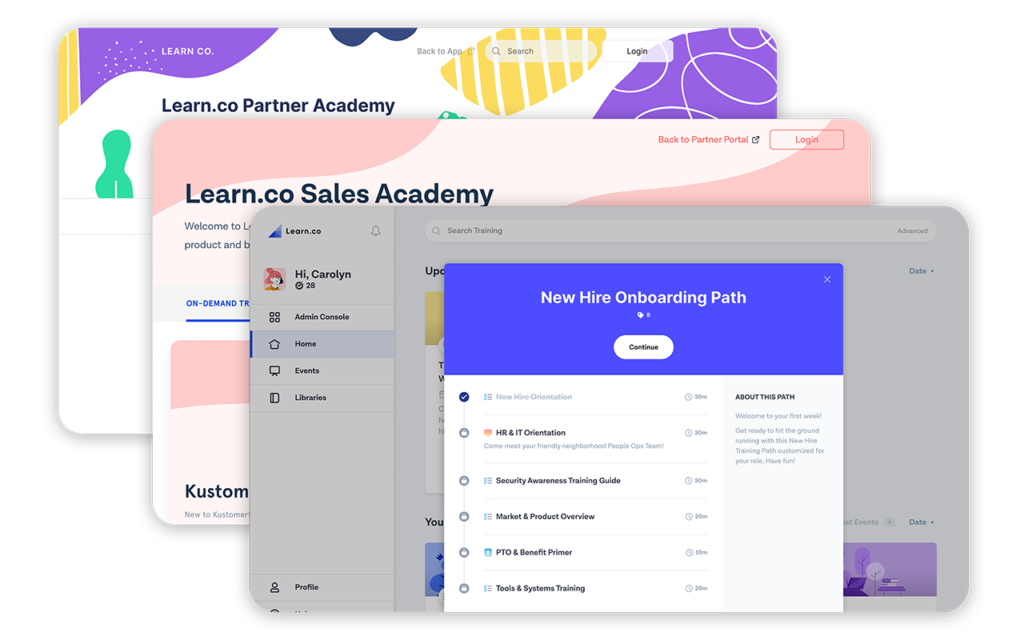
Example of a Learning Path in WorkRamp
The best learning platforms serve multiple purposes—for example, the Learning Cloud from WorkRamp allows organizations to create and deliver effective onboarding, employee development, sales enablement, and customer education on a single platform. That allows the best return on investment while opening a wide variety of training opportunities for the company.
Sprout Social used the Learning Cloud to facilitate a shift to remote-first work while achieving 95 percent learner satisfaction, 85 percent on-time course completion, and a 30 percent reduction in time spent on scheduling. Their learn-it-all culture is supported even as employees work remotely.
Encourage learning while doing
Learning in the flow of work happens at the moment. It’s learning while doing—without formal learning materials like books, courses, and lessons. It’s also known as “learning in the moment of need” because it focuses on letting employees start a task while still learning it.
It’s a better way to retain information, and it increases productivity. Employees who learn while working said they were 39 percent more likely to be productive and achieve success and 47 percent less stressed.
In addition to better results, not everyone has the time to learn outside of work. Knowledge workers, for example, spend around five hours on their core responsibilities, another three hours on creative or strategic work, and 1 to 3 hours helping other people.
While many of your employees want to learn new things and grow their careers, executives and project managers find that employees don’t upskill because they can’t make time for it.
A system that supports learning in the flow of work will help your employees upskill without adding more hours to their workday.
To do that:
- Create help docs that anticipate and solve roadblocks
- House those help docs in a self-directed learning platform
- Tell your employees who they can talk to if they need more assistance
Investing in infrastructure that encourages learning in the flow of work ensures that your employees learn exactly what they need to know when they need to.
Customize your learning experiences
Your teams and employees have different backgrounds, skills, and experiences. This means everyone wants to learn different things in different ways.
Your content managers, for instance, have no interest in learning more about hiring best practices. Your recruiters don’t want to learn how to write a great introduction.
Continuous learning requires custom learning paths for your employees so they get the most out of your training material. Each learning path should be designed with your employees’ skill levels, seniority, interests, and career development goals. For example, a beginner SEO course works really well for new content marketing hires, and a technical SEO course might be ideal for more senior employees.
While the jury is still out on the four learning styles—visual, auditory, reading and writing, and kinesthetic—it’s still good to have your training materials in different formats for accessibility. Start with creating video versions of all your docs and transcripts for your training videos.
Read more: The Indispensable Power of Personalized L&D
Create a peer-to-peer learning network
A peer-to-peer (P2P) learning network is a system where employees share their knowledge through presentations. For example, content marketing agency Animalz organizes monthly skillshares that allow team members to teach everyone else about something they’re experts in.
Big companies like Google and YouTube have built growth mindsets and learning cultures using P2P learning networks, also known as social learning networks. As of today, 80 percent of tracked training is conducted through Google’s g2g—Googler-to-Googler—network.
Googlers lean on each other because the company built a culture that applauds this behavior. Google now rarely brings in outside trainers to educate their team—they encourage their people to learn from each other.
You can emulate Google’s success with a system that encourages employees to teach the rest of your team about something they know. Topics like “How to use Google Analytics” or “Springtime around the world” create opportunities for learning and development.
The idea is to encourage your team to share their knowledge and be curious about all kinds of information.
Reward learning
Finally, it’s important to reward employees who pursue continuous learning. This might mean recognition, certifications, or even bonuses for completing a specific training program. Also, find ways to give new opportunities and projects to team members who are looking for ways to use their new skills.
Employees want positive recognition for the time and effort they’ve invested in completing training, so don’t overlook big and small ways you can reward learners. When you incentivize training, it helps reinforce a culture of continuous learning.
Create the best continuous learning experience
Continuous learning has multiple benefits for both employees and organizations. A culture of learning helps companies stay relevant, creative, and at the top of their industry, and employees gain confidence and new opportunities in their careers.
To create and support a culture of learning, it’s important to get buy-in, have the right technology platform, and incentivize learners for their efforts.
The Learning Cloud offers the perfect foundation for all learning needs, from orientation to sales enablement to customer education.
Contact us for a demo to support a continuous learning culture in your organization.
Complete the form for a custom demo.
Recent Posts
- Why Secure LMS Platforms Are a Must for Regulated Industries July 10, 2025
- Top LMS Integrations That Power Smarter, Faster Learning July 2, 2025
- Introducing WorkRamp Analytics Studio: Unlocking Your Data Insights with AI June 30, 2025
- 11 AI LMS for AI-Powered Learning June 27, 2025
- The Best LMS Platforms for Customer Retention (2025 Guide) June 27, 2025
Maile Timon
Maile Timon is a Copywriter and Content Strategist with 10+ years of experience writing for B2B and B2C brands. She creates thought leadership and SEO-optimized content and short- and long-form copy for websites, landing pages, email campaigns, and more. Follow Maile on LinkedIn.
You might also like
Simple steps to promote continuous learning and improvement
Check out these three actionable ways to expand and improve your L&D program.
Read More
Employee training by the numbers
Employee training has changed significantly over the past several years. Here are seven learning and development statistics you should know to help you improve your organization's L&D.
Read More
3 reasons learning will propel your business forward
When you invest in talent, your team becomes unstoppable. Discover how learning is a growth engine to boost business impact and retain talent.
Read More
Decrease Ramp Time and Increase Revenue
Get in touch to learn how WorkRamp can help you achieve your learning and development goals.
Request a Demo